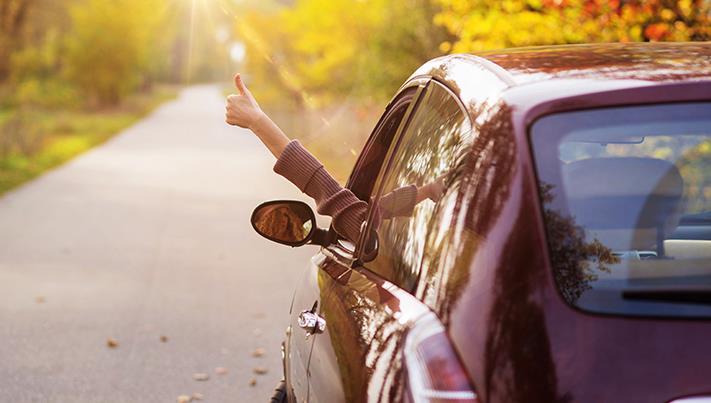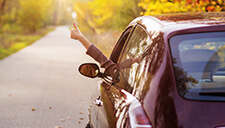
By, Mike Caulo – Founder of, Life of a Fighter
Travel, whether it’s to see family, the holidays, vacation or business, we travel. When it comes to leaving a healthy lifestyle,
Let’s look at driving first.
When people typically think about healthy lifestyles, food, and exercise will come to mind. However many factors come into play when building and keeping a healthy lifestyle. As mentioned above travel can be a massive obstacle, or it can another part of a healthy lifestyle with the right planning. Part of planning is looking at priorities, for example where does the amount of time the trip takes versus optimal rest to drive breaks. Even considering how much to eat and drink for metabolic and brain health while keeping a practical travel schedule with minimal rest breaks.
Here are some great snack options that should be either available at most rest stops, gas stations or easy to pack and bring with you:
-Trail mix
-Protein Shake
-Beef Jerky
-Boiled Eggs
-Fruit
-Almonds
-Yoghurt
-Cheese Stick
-P3 snack pack
Remember with snacks on the road the choices should be high protein, slow digesting carbs, and be sure to stay hydrated. What’s that, you want to know what to drink?
Well here you go, here’s a guide to how much to drink and ideal choices:
-Water – .25oz to .5 oz per minute
-Black coffee ‘ limit due to being diuretic
-How much – 4/1 ratio of water/coffee
-Don’t drink alcohol ‘ due to diuretic effect and mental impairment
As mentioned prior, nutrition is one part but exercise is another. Whether it is reinforcing good posture, core activation, or keeping a healthy level of mobility. Prolonged sitting and just travel
If travelling for multiple days or longer, being prepared with equipment and even doing your homework for what’s around the area is key to success.
Here’s a possible list of what to bring for a healthy travelling trip:
-Exercise clothing
-Headphones
-Yoga mat
-Swimsuit
-Jump-rope
-Resistance tubing
-Hand grips
-Athletic shoes
Here are exercises, stretches, and workouts that you can do to keep your travel healthy:
-Push ups
-Planks
-Crunches
-Downward dog
-Childs pose
-Dead
Pull over frequently to stretch if possible
I wanted to also stress the dangers and risk of not only prolonged driving daily but the risks of fatigued driving. Below you’ll find the results from the National Institute of Health looking at
‘Findings suggested that longer driving time was associated with higher odds for smoking, insufficient physical activity, short sleep, obesity, and worse physical and mental health. The associations consistently showed a dose-response pattern and more than 120 minutes of driving per day had the strongest and most consistent associations with the majority of outcomes.’
So to recap, 120 minutes of driving daily is the worst for your health. However, that does not mean that less frequent prolonged commutes are without negatives as well. The study also explains that the longer the drive time, regardless of whether it was daily or less frequent, the more association to worse physical and mental health.
A huge factor if you are driving that has to be considered is driver fatigue and how to beat driver fatigue.
The only way to address fatigue is by sleeping. Make a choice not to drive when tired or follow these guidelines to prevent fatigue:
-Get a good night’s sleep before heading off on a long trip
-Don’t travel for more than eight to ten hours a day
-Take regular breaks ‘ at least every two hours
-Share the driving wherever possible
-Don’t drink alcohol before your trip. Even a small amount can significantly contribute to driver fatigue
-Don’t travel at times when you’d usually be sleeping
-Take a
For more information on fatigue and road safety see the VicRoads website.
Now lets breakdown flying and what the best practices and protocols are. Mostly the same principles for driving will apply to
Jet lag diet – How to avoid jet lag:

1. DETERMINE BREAKFAST TIME at destination on day of arrival.
2. FEAST-FAST-FEAST-FAST – Start four days before breakfast time in step 1.
On day one, FEAST; eat heartily with high-protein breakfast and lunch and a high-carbohydrate dinner. No coffee except between 3 and 5 p.m.
On day two, FAST on light meals of salads, light soups, fruits and juices. Again, no coffee except between 3 and 5 p.m.
On day three, FEAST again.
On day four, FAST; if you drink caffeinated beverages, take them in the morning when travelling west, or between 6 and 11 p.m. when travelling east.
3. BREAK THE FINAL FAST at destination breakfast time. No alcohol on the plane.
If the flight is long enough, sleep until normal breakfast time at destination, but no later.
Wake up and FEAST on a high protein breakfast. Stay awake and active. Continue the day’s meals according to mealtimes at the destination.
FEAST on high protein breakfast and lunches to stimulate the body’s active cycle. Suitable meals include steak, eggs, hamburgers, high-protein cereals, green beans. FEAST on high carbohydrates suppers to stimulate sleep. They include spaghetti and other pasta (but no meatballs), crepes (but no meat filling), potatoes, other starchy vegetables, and sweet desserts.
FAST days help deplete the liver’s store of carbohydrates and prepare the body’s clock for resetting. Suitable foods include fruit, light soups, broths, skimpy salads, unbuttered toast, half pieces of bread. Keep calories and carbohydrates to a minimum.
1 – FEAST high protein
2 – FAST light foods
3 – FEAST high protein
4 – FAST light foods
BREAK FINAL FAST
Westbound:
If you drink caffeinated beverages, take them the morning before departure.
Eastbound:
Take the high protein light foods high protein light foods between 6 and 11 p.m. If the flight is long enough, sleep until the destinations breakfast time. Wake up and FEAST S high carbo. light foods high carbo. light foods beginning with a high protein breakfast. Lights on. Stay active. Coffee, tea, cola, other caffeinated beverages allowed only between 3 and 5 p.m.
Lastly, below I have included some great resources, further information regarding travel, and prolonged sitting. I hope you’ve enjoyed this article. Please feel free to reach out to

















